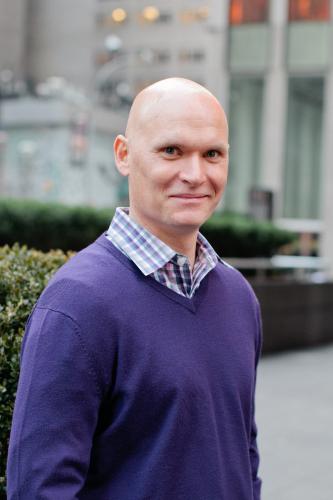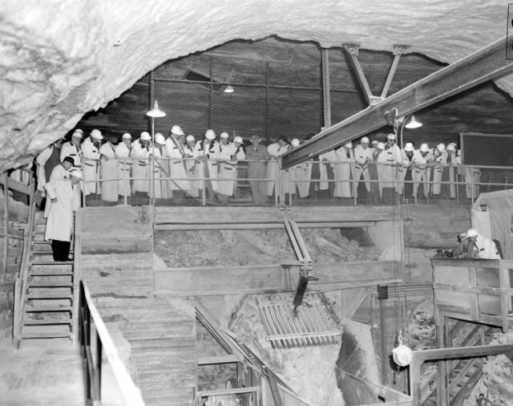
Anthony Doerr, author of “The Deep”
Credit: American Booksellers Association
While finishing up a contemporary short story class this semester, I came across a piece of fiction that has since nestled itself deeply into my consciousness. The story, which I found in Ben Marcus’s book “New American Stories,” is by American novelist and short- story writer Anthony Doerr. Doerr is the author of the 2014 novel “All the Light We Cannot See,” which won the Pulitzer Prize for fiction in 2015. He also writes a column on science books the for The Boston Globe and is a contributor to The Morning News, an online magazine.
Although Doerr is best known for his novels, his short stories have earned critical praise as well. His award-winning short story “The Deep,” published in April of 2011, won the prestigious Sunday Times EFG Private Bank Short Story Award for its effective portrayal of life with a terminal illness and one man’s relationship with death.
Set in Detroit during the Great Depression,”The Deep” is the story of Tom, a young boy who grows up in a boardinghouse for itinerant salt miners. At the age of 4, Tom discovers he has a terminal condition known as an atrial septal defect, or “a hole in the heart.” The doctor tells him he has a “Life span of sixteen. Eighteen if he’s lucky.”
Tom’s mother forbids him to do anything that might excite him. The improbability of his reaching manhood is both emasculating and touching, as Tom is barred from participating in normal activities with his peers. His mother keeps him home from school, imprisoned indoors. He is only allowed downstairs for chores and meals. His childhood is completely devoid of enjoyment. Tom “misses school. He misses the sky. He misses everything.”

Detroit salt mine circa 1920s
Credit: scribol.com
As Tom grows older, his anxiety towards his imminent death increases. Eventually, he meets Ruby, a girl from his school who begins to take him on adventures and shows him the excitement and beauty that life can hold. Tom begins sneaking out of his house so he can experience the life he has been robbed of because of his illness, going places he’s never dreamed possible. He begins to realize that he wants to live life to the fullest. He is willing to risk his health in order to spend time with Ruby and enjoy his life.
One day, Ruby asks Tom, “What’s it like? To know you won’t get all the years you should?” Tom thinks to himself, “I don’t feel so shortchanged when I’m with you.” While the papers fill up with stories of suicides, Tom gambles every day with his uncertain future. Tom’s anxieties and reservations represent the struggles that many of us face throughout life. Ruby’s character, on the other hand, represents the risks we are willing to take and how they ultimately pay off in the end.
Eventually, Tom starts a job in the maternity wing of a nearby hospital in order to earn extra change. He watches healthy babies enter life while he slowly dwindles, saying, “World goes to Hades but babies still get born.” By this point, he has passed the age at which his doctors predicted he would die. But he has lost all touch with Ruby and doesn’t live much of a life anymore.

Credit: The Times of Israel
Doerr seems to rush through this part of the story to show the dull routine that has become Tom’s life. He stops hanging out with Ruby, who has moved on to build a family. Eventually, he stops enjoying anything. He often thinks about Ruby and what could have been but uses his illness as an excuse for losing touch. Toward the end of the story, Tom accidentally runs into Ruby and reaches out to her one last time. They meet at a local aquarium, Ruby with her new baby boy. Tom sees how happy Ruby is and longs for what could have been.
But “The Deep” is about more than just unrequited love. The main character must ultimately choose between either living a long life or one that is worth living. To his own dismay, and arguably Ruby’s since she decides to meet with him, Tom chooses the former option. Doerr fills the last few pages of his story with a tone of regret. We watch Ruby and her son slowly slip back into the crowd of people, leaving Tom on the bench, “alive for one more day.”
Whether or not you believe that Tom should have risked an early death in order to truly enjoy his life or continued to do whatever he could to preserve his health, Doerr’s story raises a question we all spend our lives trying to solve: What makes life meaningful?
Check out the full story here.

 “The Deep” by Anthony Doerr
“The Deep” by Anthony Doerr


 “Help Me, Helen”
“Help Me, Helen”
 Recovering Cremation Remains After the Los Angeles Fires
Recovering Cremation Remains After the Los Angeles Fires
 “As Tears Go By” by Marianne Faithfull
“As Tears Go By” by Marianne Faithfull














